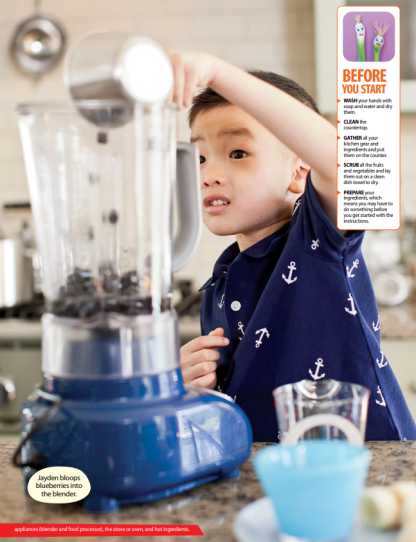By sharing what we love with others, we’re spreading little seeds of joy. It comes in all shapes and forms, including through food. Cooking with others can teach valuable life skills like time management, creativity and effective communication.
The joy of cooking goes beyond fundamental life skills: it creates meaningful bonds, connects us with our ethnic heritage, and fosters a sense of community and a common goal. But the art of preparing a meal and enjoying dinner as a family sometimes feels like a relic of a bygone time.
That’s why this week on the Joy Beat, we’re celebrating the nonprofit ChopChop Family. This organization inspires families to cook whole and healthy meals together and show the world that you’re never too young — or old — to cook.
Sally Sampson, founder and president of ChopChop Family, joined GBH’s All Things Considered host Arun Rath to discuss her lifelong love of cooking and the joy of sharing it with the community. What follows is a lightly edited transcript.
Arun Rath: ChopChop Family has grown quite a bit since its founding. Take us back to 2010 — how did you start off, and how did you get to where you are now?
Sally Sampson: My background is as a cookbook writer, and I started to really get interested in the obesity epidemic. It seemed to me that if children learned how to cook and be responsible for some of their own eating and caretaking, it might really have a positive impact.
We started out being distributed in pediatricians’ offices. Back in 2010, pediatricians were mandated to talk about healthy eating and physical activity, and they really didn’t have any tools. So, when we started, we were really just in pediatricians’ offices.
Today, we’re in pediatricians’ offices, we’re in schools, after-school [programs], hospitals, community health centers — really, wherever you find children.

Rath: I’m pretty sure it was a pediatrician’s office where I first encountered ChopChop Family. How has the organization grown since then? When you started out, was it just you?
Sampson: I think it was pretty much just me, actually. There was an editor and a designer, and none of us got paid. We just did it because we really — it was a passion project, I guess you’d say.
Today, we have about 15 employees, and everybody’s paid. Now, we have a business side, and we have designers and things like that. So, it’s grown both internally and externally.
Rath: You’re talking about starting kids off young with engaging with cooking. Was cooking a big part of your childhood?
Sampson: It was huge. I always really loved to cook. My mother cooked; to be honest, my mother cooked through “The Joy of Cooking,” and she was a big Julia Child fan. She cooked through all of that.
I grew up in a time [when] you ate what your parents gave you — you know, your parents cooked, and the food that was on the table was what you ate. I had a pretty wide palate and grew up eating everything and then, eventually, really loving to cook.
Rath: How does that shape the way that you’re bringing this to other people now?
Sampson: Well, what we say is that we look at everything through the lens of food and cooking. For instance, in the magazine, we have classic recipes, but then we also have math, science, financial literacy, cultural literacy and geography.
Let’s say you have a child who’s really interested in geography, and they’re not interested in cooking. Maybe you start talking to them about where an ingredient comes from, and then they get more interested in that ingredient, and then they get more interested in what you do with that ingredient. We really feel that you can teach just about anything through cooking.
Rath: You talked about your mom and that generation that was passionate about that book, “The Joy of Cooking,” and it’s just striking me how that was, I think, a reaction in some ways to Americans eating so much processed food. Did you get a sense that you were getting to an untapped audience here? That people are — forgive the pun — hungry for this kind of approach to food?
Sampson: Yeah, I think so. I really do. I mean, so much food that people eat is either processed or prepared by someone else. I think that the health outcomes as a result of that are pretty gloomy. If you think about almost anything that’s wrong with you — from diabetes to depression, to lupus, to migraines — it’s all: get the junk out of your diet and cook your food.
Rath: Absolutely. I’m curious, getting back to the evolution of the publications, when did you think that it would also be a good place to talk about things like financial literacy and cultural literacy?
Sampson: Well, cultural literacy sort of came naturally, right? If you’re talking about a dish from another country, and it’s a delicious dish, and you talk about where it came from and the history of it. You’re just introducing that naturally.
Financial literacy is maybe an obsession of mine. I mean — this is a whole other thing — I feel like people are financially illiterate. And not just children. If you look at the pandemic, we really learned that people aren’t saving money, they don’t understand how to shop — you know, all those things. I think it’s really critical.
So, we decided to introduce that into ChopChop, so that it’s things like, “Kana and Arun go to the grocery store. We give them $10. They need to get these things.” You know, they’re like standard math problems just to get kids thinking about: Is it advantageous to buy the larger one that costs less money or the smaller one that you’re actually going to use up? It depends on the situation. What does it actually cost to make a meal?
You know, people think fast food is so cheap. It really isn’t, and if you try to reproduce something from a fast food restaurant with real ingredients, you begin to learn that there’s not much of a difference. And, in some cases, it’s actually less expensive to make it on your own.
Rath: You’ve brought the joy of cooking to a lot of people now. I know that phrase is probably trademarked to the book, but in terms of the words as they are, talk about what that joy means for you.
Sampson: For me, personally, I love to cook. It’s amazing. I think it’s so satisfying, but we really see that with kids. For instance, we did a photo shoot this past weekend, and what we do is bring in regular kids — they’re not models — and we have them cook the different foods that are going to be in the next issue.
These are kids — some of them have cooked before, some of them have not — but they go from start to finish. They take an ingredient, and then they make a meal that they can eat and share with their family. They could bring [the meal] to a relative or a neighbor who’s sick or housebound for some reason.
We see kids really being thrilled in the way that [if] your child is in an art class, and they bring home a painting, and they want to see it on the refrigerator. They’re sharing it with you, they’re sharing it with everyone else. You see that with food.
We also have an online cooking club. There are 13 recipes that you get through, and each time, you get a stick for each achievement. I think the first one is making a smoothie. You make the smoothie, and in order to get to the next level, you have to send us a photo of the smoothie you made or of you making the smoothie.
Every photograph of these kids — they’re glowing because it’s an adult skill, which is pretty thrilling to master.






